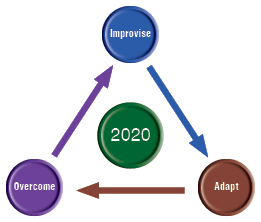Why Hire Reps? I Had No Choice!
By Charles CohonHelping manufacturers work effectively with reps is a primary reason MANA exists. So, manufacturers call all the time with questions about switching to reps.
Until today, their reasons were pretty much always one of these three:
- “I need a salesforce that already knows best prospects and is a trusted resource to those prospects.”
- “I need a salesforce that is already familiar with our market space and our technology that can hit the ground running.”
- “I need a salesforce that sells complementary, non-competing products so I can ride the coattails of the manufacturers already on that rep’s line card.”
But the call I got today was different.
“I am in the process of switching to reps,” said the manufacturer* on the phone, “so I joined MANA for the educational materials. I have some questions about Shared Marked Development Fees and Life-of-Part/Life-of-Program rep agreements.”
At the end of our conversation, I asked: “How did you decide to go with reps?”
“I had no choice,” explained the manufacturer. “We tried to hire a direct salesperson, but we couldn’t find any qualified applicants.”
“However,” he continued, “as we dug deeper into the problem of finding salespeople, we discovered that there are abundant, highly-qualified manufacturers’ reps available to sell our products, so we went with reps instead.
“Other manufacturers must have discovered the same thing because, even though highly-qualified reps are readily available, we find that we have to compete aggressively with other manufacturers to get reps’ attention. That’s why I called to learn more about Market Development fees and ‘Life of Part/Life of Program’ commissions. We’ve had to offer more generous contracts to compete with other manufacturers, but we’re very impressed with reps we’ve been able to bring on board.”
Today was the first time I heard a manufacturer say: “I hired reps because I had no choice.” But it sounds like I will be hearing that again.
Note: The manufacturer’s comments were edited for space, clarity and content.





















